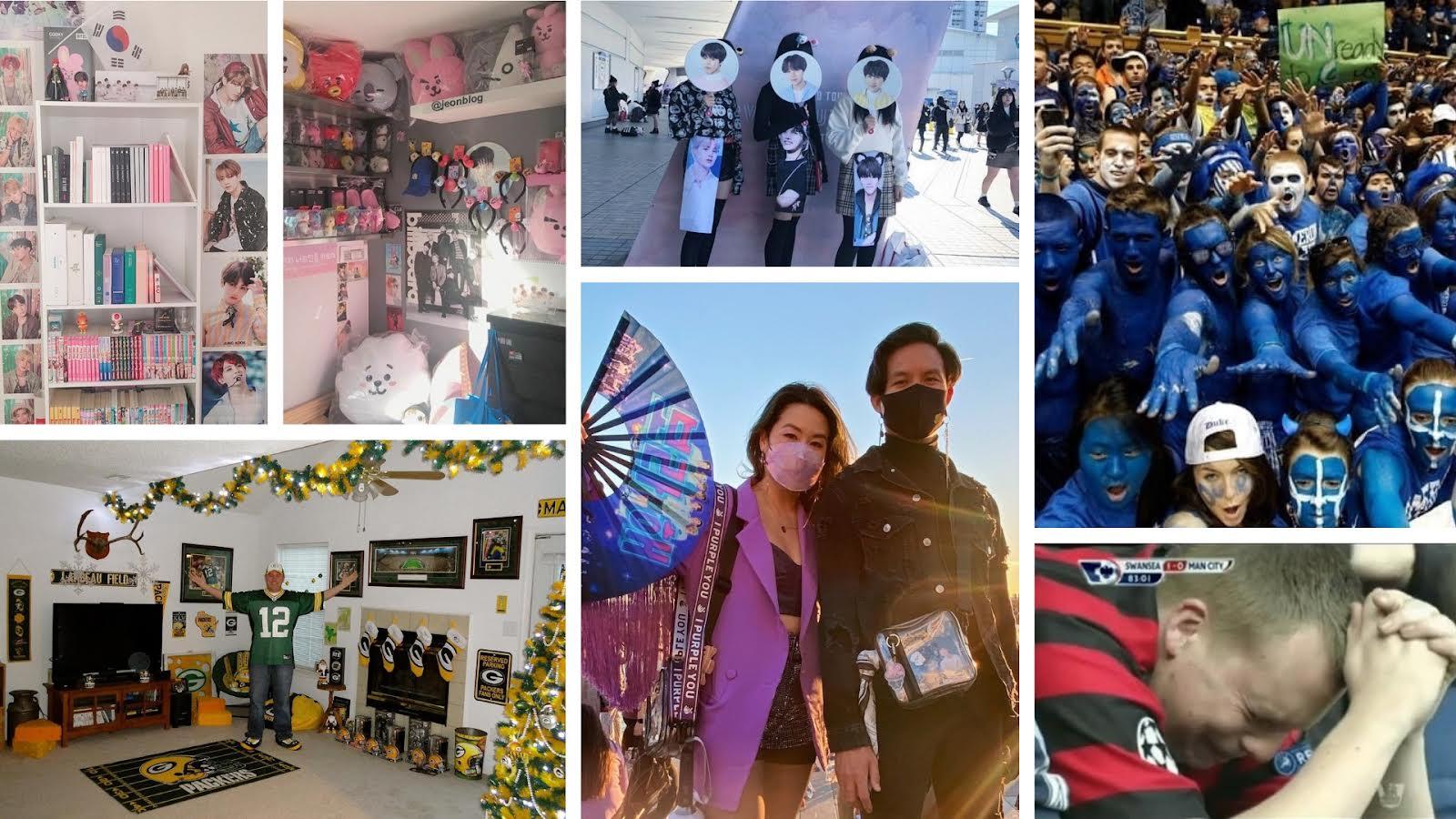By Diana Sanchez
*This article isn’t meant to bash the groups of fans discussed in this article; the main purpose is to discuss similarities between the two groups, and the passion created by the fandoms, while the media labels them differently. In addition, there are hyperlinks embedded in this article. It’s suggested that you click and watch the videos in order to get a better understanding.*
* * *
“Why is the image of young girls screaming their lungs out with excitement for a pop star crazy… psycho… scary… a bit much—but the image of young boys screaming their lungs out for a footballer is perfectly normal?” asks Yve Blake in her Ted Talk, ‘For The Love of Fangirls.’ Individuals as well as the mainstream media paint these two fandoms—along with the entertainers themselves—in a different light while there isn’t much of a difference between them.
Both groups start training for their careers at a young age in order to gain experience and have a better chance at making it big. BTS member, Jeon Jungkook, started training to become a k-pop idol when he was just thirteen years old, later joining Big Hit Entertainment (now known as HYBE) to achieve his dream. He was able to accomplish this at the age of fifteen when he debuted with BTS, making him one of the youngest idols to debut in k-pop history. Now the 7-member group is the biggest boy band in the world. Similarly, Kobe Bryant entered the NBA as soon as he graduated high school. He was then traded to the Lakers and became the second youngest NBA player in history. Both sports and pop stars train to improve their skills in order to entertain their audiences, despite their careers having a shorter lifespan compared to other fields; the age of retirement for both groups is typically in their mid-30’s.
Not only are these entertainment careers similar to one another, but their fan bases are as well. Fans on both sides spend large amounts of money on promotional merchandise, attend events, dress up, and get just as emotional. Not to mention, both fandoms share (and demonstrate) intense passion, have a wide range of knowledge about their favorite groups, and have fan chats. For BTS, the fan chat typically goes, “Kim Namjoon! Kim Seokjin! Min Yoongi! Jung Hoseok! Park Jimin! Kim Taehyung! Jeon Jungkook! BTS!” Similarly, sports fans can reveal their passion by maintaining synchronized fan chats.
Despite these two fandoms showing overlapping similarities, the media still crafts the idea that the two groups differ from one another. Sports fans are accepted into society, while boy band fans are labeled as “crazy.” However, there is one major difference between these two fandoms – gender. Sports fans are male-dominated while boy band fans are female-dominated. Males showing emotion towards their favorite sports teams are seen as the norm despite some sports fans showing violence, most notably during EURO 2020 outside of Wembley Stadium.
During EURO 2020, at Wembley Stadium, fans broke into the stadium without any tickets or COVID check-ins. One news article wrote, “There was a lot of alcohol, cocaine and violence. Fans were throwing glass bottles at each other and fighting the whole day. Many of the seven thousand Italian fans ended up abused or even beaten up.” BTS fans, ARMY, attended a concert at the same stadium in 2019 where they were seen peacefully leaving the stadium after enjoying their time. Now, this isn’t meant to bash all sports fans as violent (because not all of them are) or to say all ARMY’s are peaceful (for the same reason), but more to show how, despite showing high levels of aggression, the media marks sports fans as the norm.
Toxic behavior reaches all fandoms; after a game, sports fans might take to Twitter to bash a player for their performance during a game. Similarly, ARMY might send hate to a member for whatever reason. Both groups receive an unnecessary amount of hate directed towards an individual or the team/group as a whole.
The stigma directed towards boy band fans is linked to sexism in our society. Taking something women enjoy and turning it into something hateful has been typical in today’s society. For example, the term “Bieber Fever” was created around 2012. This “medical condition” was created to label Justin Bieber’s fans, the majority of whom were female, further revealing the stigma attached to the passion that fans hold. Women in our society need to be respected for their ideas and the passion they show to artists; the devotion both women and men hold for their favorite entertainers shouldn’t be perceived differently by the media, especially because they have such similarities. This stereotype carries over into the idea that females are “emotional” about things, while men are perceived as just “passionate,” despite the significant similarities.
To conclude, Yve Blake in her Ted Talk states, “Boys crying at the footie, that’s the love of the game. Girls crying at a Justin Bieber concert? That’s pathetic,” which puts into perspective the double standard set by our society and the media for women and men. The media, and society itself, needs to learn to accept both fandoms for their fondness for their entertainers; it’s unjustified to judge women negatively for their passion, while men—equally enthusiastic about comparable activities, are praised.
